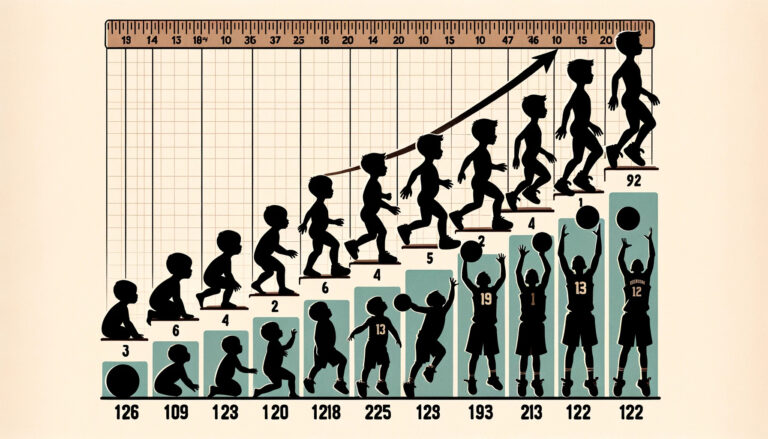How to Choose the Right Sport for Your Child: A Comprehensive Guide
- The Importance of Rest and Recovery in Young Athletes’ Regimens - October 23, 2023
- Boosting Stamina and Endurance in Young Athletes: Tips and Tricks - October 23, 2023
- The Role of Coaches in Shaping Young Athletes - October 23, 2023
Understanding Your Child’s Interests
A critical starting point in selecting a suitable sport for your child is gaining insight into their personal interests. It’s important to remember that children participate in sports not only to learn new skills or achieve physical fitness but also to have fun. If your child is genuinely interested and enjoys the sport, they are more likely to stay committed and perform better. Furthermore, an interest-motivated choice increases the chance of your child maintaining a lifetime admiration and passion for the sport, encouraging a healthier lifestyle in the long term.
It might be tempting to impose your own sport preferences on your child. However, it’s essential to avoid projecting your personal aspirations and instead, encourage your child to explore his or her own interests freely. Begin with an open dialogue about their favorite sports, ask why they like certain games more than others, or even let them try different sports activities until they find the one that captivates their interest. Opening up this conversation can nurture a deeper bond between parent and child while yielding fruitful insights into your child’s inclinations.
The Importance of Age in Sport Selection
Age plays a pivotal role in the process of selecting a sport for your child. It has a direct influence on a child’s physical abilities, cognitive development, and emotional maturity. They must be able to grasp the rules of the game, and have the physical strength and endurance required. Younger kids, for instance, may lack the attention span and physical development needed for sports that involve complex rules or long durations of play. Therefore, they are better suited to sports that involve shorter, more manageable chunks of activity, like gymnastics or short sprints.
As children age, their skill sets and understanding of various sports change and improve. Older kids can handle the increased complexity and physical demands of team sports like football or basketball. Similarly, the capacity to handle the mental demands of sports also evolves as children grow. Adolescents, for instance, begin to develop the ability to strategize and grasp the subtleties of team dynamics, making them suitable for sports that require these skills. Hence, it is advisable to keep the child’s age in mind while picking a sport for them.
Assessing Your Child’s Physical Abilities
Recognizing and evaluating a child’s physical attributes can offer vital insights into which sports they might be best suited for. The child’s size, agility, strength, and coordination, among other aspects, play a critical role in their performance and enjoyment of the sport. Physical traits often align naturally with certain activities; for instance, taller children may excel in basketball, while those with good hand-eye coordination might do well in baseball or tennis. Understanding these attributes can help parents guide their child towards a sport that complements their physical abilities, leading to improved self-confidence and a positive sporting experience.
Additionally, physical assessments should take into consideration the child’s developmental stage. Children grow and develop at their own pace; hence, chronological age might not always provide an accurate indication of physical readiness for a particular sport. Parents should watch their child during play to identify any outstanding skills or potential challenges. By keenly observing the child’s movements – whether they’re able to balance well, how they run or kick, and their hand-eye coordination – parents can provide support and encouragement. Furthermore, not pushing kids into sports they are not physically ready for can save them from injuries and burnout.
Consideration of Personality Traits in Sport Selection
Understanding the personality traits of your child can significantly aid in choosing the right sport for them. A child who is introverted or more comfortable in solitary environments may prefer individual sports such as tennis, swimming, or gymnastics. These sports allow your child to focus entirely on developing their skills without the additional social pressures that come with team sports.
On the other hand, a child with a more extroverted character, who thrives in social environments and enjoys working in a group scenario, may find team sports more appealing. Sports like football, basketball, or hockey require coordinated teamwork and offer numerous opportunities for social interaction. Therefore, they can greatly help in the development of the child’s collaboration skills and sociability.
Analyzing the Time and Financial Commitment
The effort to engage your child in sports does not come without its demands, both in terms of time and finances. Every sport has its own unique demands, relating to not only the physicality of the child but also the time commitment that it pulls from the family’s routine. Parents must be willing to drive their kids to practices and games, spend weekends at tournaments, and may even need to adjust their work schedules to accommodate their child’s sporting activities. Sports instill many great qualities in children, but proportionate balance must be maintained to ensure everyday life is not significantly disrupted.
Financial investment in sports is also an essential factor to consider when selecting the apt sport for your child. These costs range widely from sport to sport and can include equipment, uniforms, league fees, travel fees for out-of-town games or tournaments, and even private instruction or coaching. The budget plays a crucial role in the decision-making process and necessary planning is required to avoid unanticipated financial burdens. Affordability should be efficiently evaluated to enable continuity and maintain enthusiasm in the child.
The Role of Team vs. Individual Sports
Participating in sports can be an excellent way to build a variety of skills and abilities in children. The type of sport – team or individual – can significantly influence the experiences and skills your child develops. Team sports, such as football, basketball, and soccer, promote cooperation, coordination, and team-building skills. These sports nurture social skills and encourage children to work together towards shared goals. They also help children develop a sense of responsibility and accountability to their team.
On the other hand, individual sports such as tennis, swimming, or martial arts place a unique set of demands on children. They require intense focus, self-reliance, and the ability to cope with pressure. Children learning individual sports become accustomed to performing under scrutiny. They learn how to manage their emotions while under pressure and how to cope with both success and failure. Different as they are, both team and individual sports provide valuable life lessons that extend beyond the playing field.
Balancing Academics and Sports: A Key Aspect
Engaging in sports provides children with valuable life skills such as discipline, teamwork, and resilience. However, it’s equally crucial for parents to ensure that a balance is maintained between their child’s academic and sporting pursuits. Both areas are instrumental in shaping a child’s future; academic skills equip them with knowledge and cognitive abilities, while sports impart physical fitness and social skills.
The art of balancing academics and sports is a delicate one. It’s about planning, setting priorities, making sacrifices and, most importantly, effective time management. Parents can help their children create a timetable that includes both studying and practicing sports. This not only helps children be more organized but also allows them to have dedicated study and playtime. Keeping open communication with your child’s teachers and coaches can also assist in striking this balance better, as they can provide useful inputs about your child’s performances and schedules in both domains.
The Health and Safety Factors in Sports
Health and safety are indispensable factors when it comes to children’s participation in sports. Whether they are running around a soccer field, swimming in a pool, or practicing gymnastics, each sport comes with its unique set of risks and hazards. It is crucial for children to undergo a medical check to ensure they are in good health and can physically cope with the sport’s demands. Proper nutrition, adequate hydration, and sufficient rest are equally essential to support a child’s athletic endeavors. Ensuring a child wears appropriate sports gear such as helmets, shin guards, or swim goggles can significantly reduce the risk of injury.
While protective measures are necessary, recognizing that injuries can and do happen is part of playing sports. The key is to ensure that the risk of serious or long-term injury is minimized. Basic first aid knowledge, prompt professional medical attention when warranted, and ensuring children understand and follow safety rules and instructions are all critical for safety. Furthermore, children should also be made aware of their bodies’ signals and taught to listen to them – if something doesn’t feel right, they should stop and seek help. Coaches and parents play a vital role in ensuring all these safety norms are followed to secure a safe sports environment for children.
Long-Term Benefits of Different Sports
An active involvement in sports confers a multitude of long-term benefits on a child. It has been observed that children who are consistently active in sports tend to grow into adults with a healthier lifestyle. They are more likely to engage in regular physical activity, resist from unhealthy habits, and cultivate improved fitness. The seeds sown with a sporting habit during childhood usually sprout to become firmly entrenched characteristics in adulthood.
In the academic arena too, sports can play a decisive role in shaping a child’s future. Athletic pursuits often help instill valuable skills like discipline, teamwork, and resilience, which are sought after in education and professional settings. More than simply the physical facets, these essential soft skills learned through sports may contribute to a successful personal development and enhance career prospects later in life.
Involving Your Child in the Decision Process
When it comes to determining which sport your child should participate in, their voice and decision play a crucial role. Including your child in the decision process not only conveys to them that their opinions matter, it leads to a greater likelihood that they will stay committed to the chosen sport. Instead of deciding on behalf of them, parents should aim to be guides in highlighting the pros and cons of each sport, including but not limited to skill requirements, time commitments, and the potential benefits.
Additionally, dialogue provides an opportunity for your child to express any fears or anxieties they may have concerning certain sports. While it is natural for children to be hesitant when trying something new, it is important to ascertain if their resistance stems from genuine distress or merely the fear of stepping out of their comfort zone. Thus, incorporating your child’s perspective in the decision-making process is a vital component to choosing the right sport.
Why is it important to understand my child’s interests in making a decision?
Understanding your child’s interest is crucial because it ensures that your child will enjoy and stay committed to an activity. If they enjoy what they are doing, they are likely to show more interest, dedication, and better performance.
How does age factor into sport selection for my child?
Age plays a significant role in sport selection. Certain sports, due to their physical demands and skill requirements, are more appropriate for specific age groups. Younger children might succeed more at sports that focus on fundamental motor skills, while older children can handle more complex sports.
How can I assess my child’s physical abilities for a particular sport?
You can assess your child’s physical abilities by observing their performance in various physical activities. Note down their strength, endurance, flexibility, balance, speed, and coordination. Consult a coach or a physical education teacher for a professional assessment.
How can my child’s personality traits affect their sport selection?
Personality traits are key in sport selection. For instance, introverted children may prefer individual sports like tennis or swimming, while extroverted children may excel in team sports like soccer or basketball.
What should I consider regarding time and financial commitments for my child’s sport?
You should consider the amount of practice and game time required, travel time to and from practices and games, and the cost of equipment, uniforms, registration fees, and potentially coaching fees.
What is the difference between team sports and individual sports?
Team sports require cooperation and collaboration among team members, while individual sports rely on personal skill and performance. Both have their benefits and can contribute differently to your child’s development.
How can I balance my child’s academics with sports?
Creating a schedule that includes time for homework, studying, and sport practice can help balance academics and sports. Also, ensure that your child understands the importance of both and that a poor academic performance might prevent them from participating in sports.
What health and safety factors should I consider in sports?
Consider the risk of injury in the sport, and whether the sport is suitable for your child’s physical abilities. Ensure that the sport is conducted in a safe environment with proper supervision, and your child understands the importance of safety rules.
What are the long-term benefits of participating in sports?
Sports can contribute to physical health, promote teamwork and leadership skills, boost self-esteem, enhance social skills, and teach the value of discipline and goal setting.
Why should I involve my child in the decision process?
Involving your child in the decision process ensures that they feel valued and heard. It increases the likelihood of their commitment to the chosen sport since they were part of the decision-making process.



